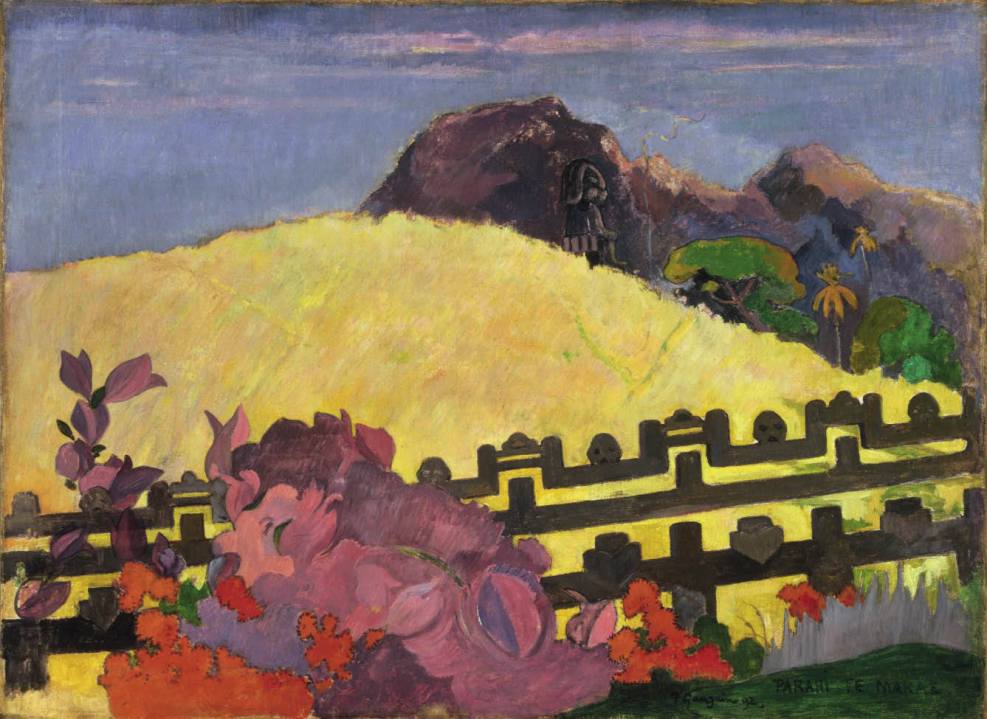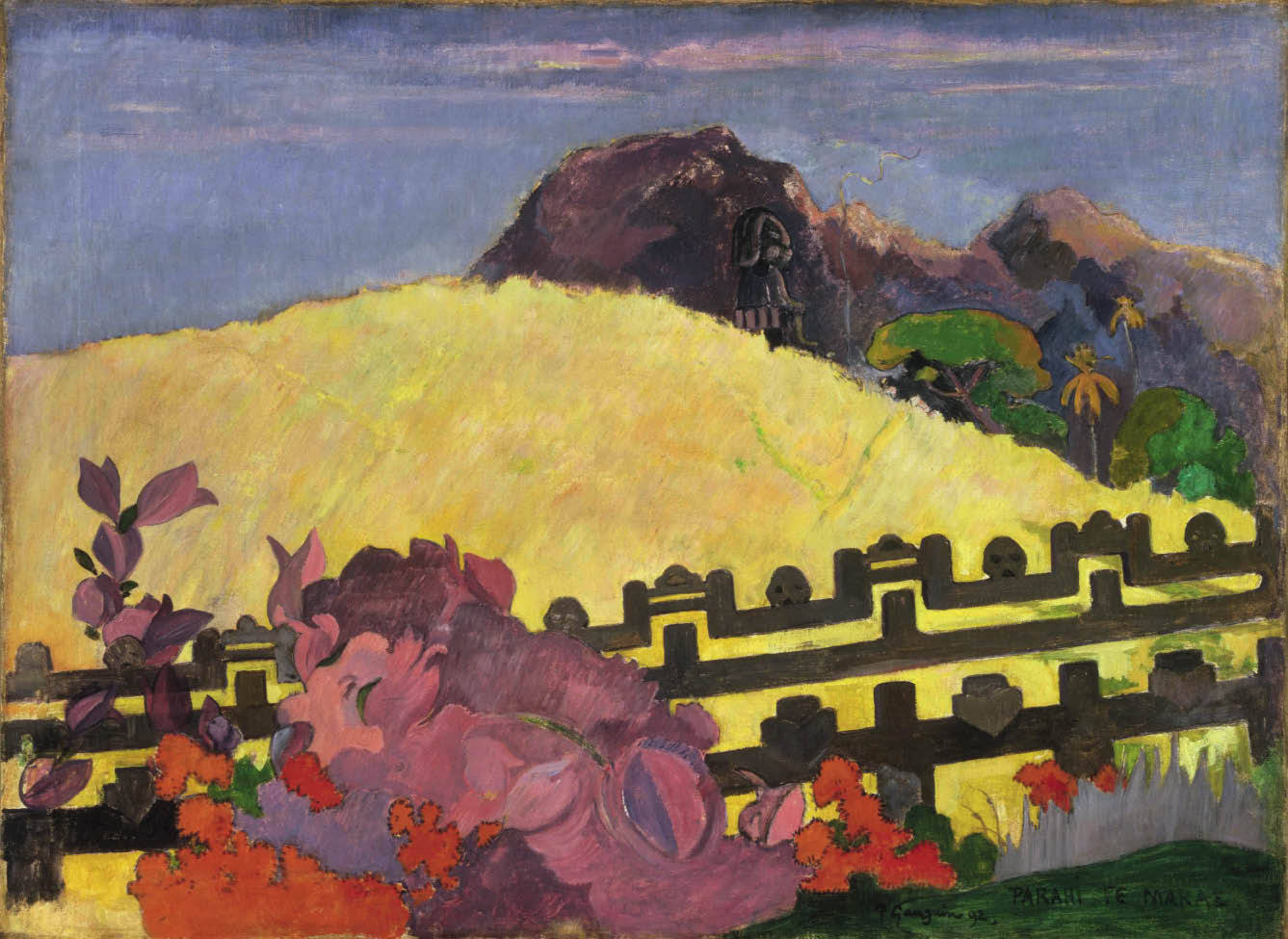The greatest myth to affect Paul Gauguin (1848–1903) is the one of his own life: the romantic bohemian who escaped to the South Seas.
The greatest myth to affect Paul Gauguin (1848–1903) is the one of his own life: the romantic bohemian who escaped to the South Seas. This has spawned numerous popular interpretations from novels such as Somerset Maugham’s Moon and Sixpence to films which include Lust for Life (though principally about van Gogh, it features Anthony Quinn as an unforgettable Gauguin) and the Danish–French Wolf at the Door (1986). The danger with such an enjoyable myth as Gauguin’s back-to-nature nonconformist is that it is more than likely to obscure the real merits of the work the artist produced, with great seriousness and at great physical and emotional cost. It’s all too easy to view the work as a by-product of the myth, whereas the extraordinary and compelling originality of Gauguin’s paintings and sculptures are what should place him at the forefront of our attention.

Get Britain's best politics newsletters
Register to get The Spectator's insight and opinion straight to your inbox. You can then read two free articles each week.
Already a subscriber? Log in








Comments
Join the debate for just $5 for 3 months
Be part of the conversation with other Spectator readers by getting your first three months for $5.
UNLOCK ACCESS Just $5 for 3 monthsAlready a subscriber? Log in